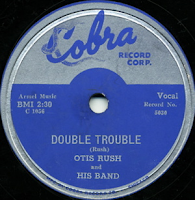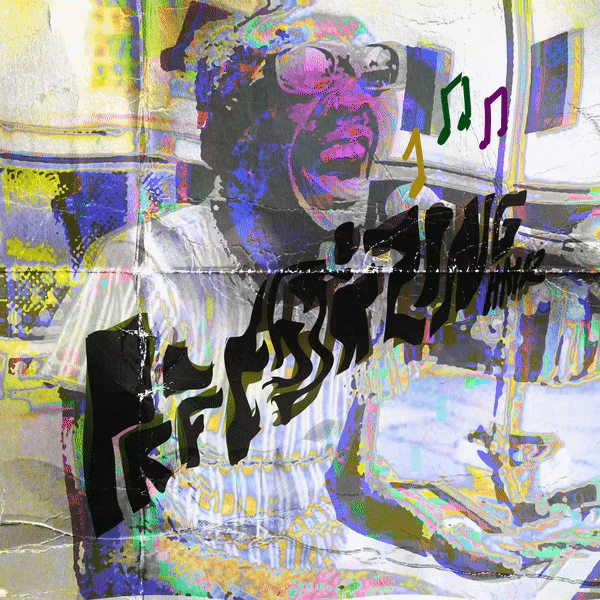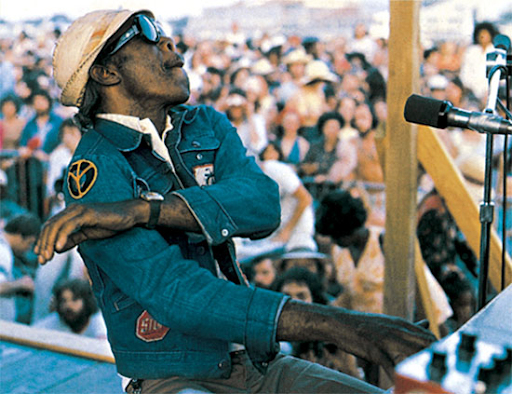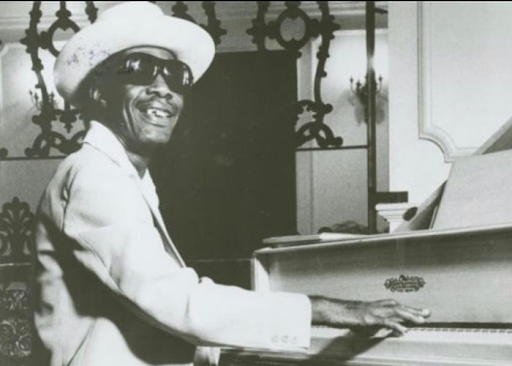Wednesday, November 30, 2022
Song of the Day #26: Dust My Broom - Elmore James
November 2022 Overview
November 2022 Overview
Writer's Check-in
Music Stats for the Month
Articles
- "The Bach of Rock": Professor Longhair’s Virtuosic Genius
- Album Anniversaries: 50 Years Later, Stevie Wonder’s 'Talking Book' Remains Both Visionary and Heart-wrenchingly Beautiful
Monthly Playlist
- Up Jumped The Devil - Nick Cave & The Bad Sees
- Walking On The Water - Creedence Clearwater Revival
- It's Not Up To You - Bjork
- Boom Boom - John Lee Hooker
- Double Trouble - Otis Rush
- New Grass - Talk Talk
- Then He Kissed Me - The Crystals
- Shake For Me - Howlin' Wolf
- All Your Love - Otis Rush
- Mellow - Elton John
- This Land Is Your Land - Woody Guthrie
- I'm Ready - Muddy Waters
- Kathy's Song - Simon & Garfunkel
- My Love Will Never Die - Otis Rush
- The 59th Street Bridge Song - Simon & Garfunkel
- You Can Call Me Al - Paul Simon
- I'm Gonna Be A Wheel Someday - Fats Domino
- America - Simon & Garfunkel
- (Your Love Keeps Lifting Me) Higher & Higher - Jackie Wilson
- High - The Cure
- All I Have To Do Is Dream - The Everly Brothers
- 2 + 2 = ? - The Bob Seger System
- Bennie And The Jets - Elton John
- Goin' Down Slow - Howlin' Wolf
- San-Ho-Zay - Freddie King
- Marie - Randy Newman
- I Just Want To Make Love To You - Muddy Waters
- My Wave - Soundgarden
- Shake Your Moneymaker - Elmore James
- My Grandfather's Clock - Johnny Cash
Tuesday, November 29, 2022
Song of the Day #25: Shake Your Moneymaker - Elmore James
Shake Your Moneymaker - Elmore James
Song of the Day #25
Monday, November 28, 2022
Song of the Day #24: My Wave - Soundgarden
My Wave - Soundgarden
Song of the Day #24
Sunday, November 27, 2022
Song of the Day #23: I Just Want To Make Love To You - Muddy Waters
I Just Want To Make Love To You - Muddy Waters
Song of the Day #23
Saturday, November 26, 2022
Song of the Day #22: Marie - Randy Newman
Marie - Randy Newman
Song of the Day #22
Friday, November 25, 2022
Song of the Day #21: San-Ho-Zay - Freddie King
San-Ho-Zay - Freddie King
Song of the Day #21
Thursday, November 24, 2022
Song of the Day #20: Goin' Down Slow - Howlin' Wolf
Goin' Down Slow - Howlin' Wolf
Song of the Day #20
Wednesday, November 23, 2022
Song of the Day #19: Bennie and the Jets
Bennie and the Jets - Elton John
Song of the Day #19
Tuesday, November 22, 2022
Song of the Day #18: 2 + 2 = ? - Bob Seger System
2 + 2 = ? - Bob Seger System
Song of the Day #18
Monday, November 21, 2022
Song of the Day #17: All I Have To Do Is Dream - The Everly Brothers
All I Have To Do Is Dream - The Everly Brothers
Song of the Day #17
Sunday, November 20, 2022
Song of the Day #16: High - The Cure
High - The Cure
Song of the Day #16
Saturday, November 19, 2022
Song of the Day #15: Higher And Higher - Jackie Wilson
Higher and Higher - Jackie Wilson
Song of the Day #15
Friday, November 18, 2022
Song of the Day #14: America - Simon & Garfunkel
America - Simon & Garfunkel
Song of the Day #14
Talking Book's 50th Anniversary
Album Anniversaries: 50 Years Later, Stevie Wonder’s 'Talking Book' Remains Both Visionary and Heart-wrenchingly Beautiful
Stevie Wonder may have always been R&B’s great innovator, but his first era-defining album transformed him into something more — an introspective and personal artist.
Sometimes, the greatest signs of musical genius are not in grandiose ambitions but in the subtle, humble, and personal. Stevie Wonder’s Talking Book certainly isn’t an album that imposes itself on anyone. Compared to the extravagance of its ‘70s pop culture contemporaries, Talking Book sounds positively meek in its modesty. The album is almost entirely filled with unpretentious love songs, a much narrower scope than expected from such a revered genius. He expresses his goals succinctly on the original vinyl sleeve, containing a message exclusively in Braille that translated to “Here is my music. It is all I have to tell you how I feel. Know that your love keeps my love strong.” Despite its humble nature, Talking Book is unanimously considered one of the greatest albums of all time, with “Superstition” and “Sunshine of My Life” remaining radio staples and boasting millions of Spotify listeners.
To understand the secret behind the lasting power of such an unassuming record, one needs to recognize its place in Stevie Wonder’s career. For the first decade of his career, he possessed almost no artistic freedom. Signed onto a ten-year contract with the Motown label, 11-year-old Stevie quickly became a part of the label’s music mass-production system. Although he co-wrote many of his biggest hits, he was unable to create music with his independent vision, forced into a box under Motown’s rigid formulae, songwriting teams, and commercially-oriented singles.
Soon enough, Stevie's thirst for freedom would be quenched. On his 21st birthday, he signed a new contract with Motown that gave him more financial compensation and artistic autonomy than ever before. Now, he could play, write/produce, and guide the direction of his albums. With this newly-obtained freedom, he recorded Music of My Mind, a trail-blazing R&B masterpiece. Co-produced with synthesizer pioneers Robert Margouleff and Malcolm Cecil, the album utilized the TONTO synthesizer to create unbelievably futuristic soundscapes. Songs like “Superwoman” sounded like nothing else in soul music: it was a touching soul ballad, but you can get lost in the sheer breadth and depth of its sound. With such a visionary album under his belt, his possibilities for future albums were endless.
After such a peak, most artists would continue that experimental route, attempting many more ambitious projects before collapsing under the weight of their pretensions. However, Stevie took a step back and realized he finally had the freedom to express himself. Now that he could display his personality without fear, it would be foolish not to take advantage of it.
Thus, his next album, Talking Book, became his most personal album. If his sprawling opus Songs In The Key of Life was the dictionary of human emotions, this record is a mini-encyclopedia of himself, each one being an intimate, revelatory piece. Yet, unlike most lyric-oriented singer-songwriter albums, he encoded his confessions within the album’s melodies and experimental textures. He was still pushing the boundaries of soul music but within a personal context.
This unique approach is what makes an anthem like “I Believe” one of his greatest songs, because the song at its core is really a personal prayer. Yes, it’s a love song, but it displays love as not merely a worldly pleasure but as a life-giver itself, where in our worst times of shattered dreams and worthless years when everything seems unrepairable, only the love within and between people can provide a guiding light of purpose. The chorus functions like a mantra, calling to overcome his pain and sorrow by placing his trust in the love he feels for others. As the chorus repeats with a warm synth backdrop, it almost sounds like Stevie’s soul is rising higher and higher into the heavens, opening his heart to the whole world to heal his wounds and let the love flow through him. It’s very ambitious sonically, but it’s channeled through a tormented spirit, expressing something so simple but incredibly profound.
This troubled conscience is expressed just as effectively in “Blame It On the Sun.” The magic of his confessionals is that Stevie Wonder does not feel emotions with the same magnitude as a regular person. He is a rare individual who almost exclusively felt emotions on a macro level, where his inner happiness or despair was a manifestation of the positive and negative energies he absorbed from people around him. This is why, in this personal expression of overwhelming sadness, he had to utilize such a vast astral sound, where dense harmonies and synth overlays mix with a rich acoustic backing to produce an otherworldly sonic universe. This is Stevie Wonder transforming into a cosmic being, where each tear he sheds ripples and reverberates throughout the whole universe in total unity of feeling. No wonder he blames his sadness on the sun, wind, and trees: he’s so connected to the cosmos that his emotions may as well be governed by supernovas in some distant galaxy billions of miles away.
This universalism is the key reason for “Superstition” remaining an enduring classic. Of course, a big reason is its iconic clavinet riff, building a groove that’s not only infectious and danceable but also deep-cutting and complex. Yet, it stands alone from most dance-oriented funk classics because the song is really a warning call, foreseeing societal self-destructive behaviors from blind attachment to personal dogmas. Yet, the song is not a fiery societal condemnation: it is a sermon where Stevie desperately asks his followers to heed his advice for their own sake. Even with its regular airplay, it's difficult to shake off the feeling of looming danger that it brings every time.
Although these three songs provide the strongest emotional punches, the rest of the album still strikes an ideal balance of ambition justified by introspection. His use of electronic instruments like the TONTO synthesizer and Hohner Clavinet reached maturity in Talking Book, providing an unmatched sonic depth to each song. The glistening riff of “Tuesday Heartbreak,” the soft trickles of keyboard-generated sunbeams on “You’re the Sunshine of My Life,” and the meditative synth-lines of “You And I” are all sublime additions to their gorgeous melodies. Through these songs, you deeply feel who Stevie Wonder is, exploring each unique musical universe he creates and, with time, cherishing everything about them.
This makes Talking Book the greatest proof that meaningful, timelessly great art cannot come from cookbooks nor from sky-high ambitions alone: it must be an honest exploration of the inner workings of the soul. Almost all artists start out with starry-eyed ambitions of becoming artistic giants, but only the greatest ones find inspiration by looking deeply within themselves. Stevie Wonder had every opportunity to sell out or fracture under the weight of his immense talent, but the fact that he chose to undertake this exercise of self-discovery is ultimately what guaranteed his place in musical history. That’s why, even when the 70s have become a distant memory, this humble masterpiece holds up among the public as such a delightful experience. As long as the classic era of R&B remains relevant, Talking Book will serve as a source of inspiration for countless musicians on how to find themselves within their own creations.
Thursday, November 17, 2022
"The Bach of Rock": Professor Longhair’s Virtuosic Genius
"The Bach of Rock": Professor Longhair’s Virtuosic Genius
How Roy “Professor Longhair” Byrd’s individualistic and experimental piano-playing style revolutionized the New Orleans music scene and paved the way for rock and soul.
Musical instruments are not merely noise-making machines: They are conduits into dimensions of musicians’ souls. For many musicians, words fail to express the deeper essence of who they are. Only through art can they directly communicate the complexity of their souls and the emotions they experience. When accomplished musicians play their instruments, they pour out their passions, desires, and fears in front of you. By the end of their performance, they have nothing left to say: They’ve expressed all they possibly could about themselves.
This is what places Roy “Professor Longhair” Byrd, “the Bach of Rock” of New Orleans, among the greatest musicians of his time. Listen to any three-second snippet of him playing piano, and you’ll know it’s him: He combined boogie-woogie, calypso, mambo, and rhumba to create a funky and original style. His performances ooze with jubilation, immediately transporting you into the heart of New Orleans’ vibrant culture. Yet, his experimental style always feels like a natural expression of who he was. When asked about his career, he simply said, “I didn’t know what I was playing, but it sounded good to me.” No wonder that despite his influence on future piano players like Fats Domino, Allen Toussaint, and Randy Newman, none of them could recreate his personalized magic.
Such extraordinary talent can only come through special circumstances. The legend goes that Longhair learned how to play on a beaten-down piano with missing keys he found in an alley, and after performing alongside local players, Longhair was able to develop his distinctive style. His songs would never be simplistic topsy-turvy grooves. Instead, the Louisiana native threw in sudden glissandos, tricky funky rhythms, and random time signature changes to keep you on your toes. He would perform a piano acrobatic show right in front of your eyes. At Longhair’s best, his songs would tell a story, each phrase conveying a different “micro-emotion” that the protagonist (generally himself) feels. As he grew older and gained more jazz influence, his performances only became more elegantly woven tapestries.
However, before exploring his technical performing peak, we need to read the Professor’s textbook: a compilation of his early singles. The issue is that Longhair performed for multiple labels in the 1940s to ‘50s, so there aren’t many compilations that put all his classics in one place. Luckily, he performed quite a bit of material for the Atlantic label, resulting in his most famous singles and eventually the New Orleans Piano compilation. Distill it down to its core songs, and we’re left with some of the highest peaks of New Orleans R&B: “Hey Now Baby,” “Tipitina,” “Hey Little Girl,” and “Mardi Gras In New Orleans.” Each one displays his performing brilliance and his expansive emotional range. These hits are not just songs: they let you step into his mesmerizing musical universe.
Photo courtesy of Alligator Records
“Hey Little Girl” thrusts you into that world immediately, telling the story of Longhair failing to seduce a girl at a bar. You can tell he has had a bit too much to drink by that gutsy, wobbly bassline, almost as if he was tripping with every step. This heaviness is countered with lighter, graceful melody lines that portray his charming, seductive personality. These contrasting elements would sound rather ordinary on their own, but when juxtaposed, they set the stage for Longhair’s tale, where he tries his best to woo the girl but is way too drunk to do so and keeps on fumbling. Each stumble is displayed by the heavy bassline crashing into the lighter main melody, and the climax of his struggle to appear sober comes during the “look what you’re gonna miss” solo, where the heavy and light lines almost brawl against each other. “Hey Little Girl” is a perfect example of Professor Longhair’s narrative genius — his stories are told through all aspects of his music, not just lyrically.
The light, airy elegance of “Hey Now Baby” is the perfect foil to the heavy, earthy grime of “Hey Little Girl.” While the latter was set in a murky tavern, “Hey Now Baby” instead takes place in an elaborate ballroom with an air of sophistication. It’s mind-blowing how perfectly the main melody describes the graceful dance of an elegant ballerina, the riff containing a complex burst of notes within an orderly rhythmic structure. Meanwhile, Longhair’s gruff voice provides a much-needed contrast, highlighting the rift between his rowdy, rough persona and the much classier ladies at this ballroom.
Professor Longhair’s voice is hardly the only way he expresses himself. “Tipitina” exemplifies the epic intros he would eventually perfect. The piano lead lines ebb and flow, turning from playful to moody in a moment’s flash. Even when the vocals begin, he adds small variations to each repetition of the melody to keep it interesting. On his dance tracks like “Ball The Wall” and “In The Night,” he can use his piano to not only provide an exuberant rhythmic backing but actually amplify the wild energy.
Photo courtesy of The 100 Companies LLC
The culmination of his talents is found in his most iconic song, “Mardi Gras In New Orleans.” This song is not simply the anthem of the Mardi Gras festival in New Orleans: it is a celebration of life. That danceable bassline is one of the most exhilarating beats you’ll ever hear, and combined with the steady counterpoint rhythm, it perfectly embodies the Mardi Gras parade. Yet, this is his most personal song as he describes the experience of seeing the festival for the first time with child-like wonder and awe, making its ecstatic nature deeply intimate. It is not just a routine party tune; it is a cathartic expression of joy and excitement.
With greatness abound in these masterpieces, one would think he would be more well-known. Sadly, his style was simply too daring for contemporary white audiences, and while New Orleans artists like Fats Domino, Larry Williams, and Lloyd Price attained commercial success, Longhair could only dream of having the same appeal. This is partially the reason he became disillusioned with the music industry and quit in the 1960s.
Luckily, great art always survives, and he regained prominence after performing at the 1971 New Orleans Jazz and Heritage Festival, sparking his return to live performing. On his new studio albums Rock N’ Roll Gumbo and Crawfish Fiesta, the seeds of his musical vision finally sprouted. His complex style only became more intricate and memorable on those records, and they hold the re-recorded, definitive versions of “Big Chief,” “Tipitina,” and “Hey Now Baby.” He was even able to Longhairify other genres, like honky-tonk country, rock, blues, and soul, showing how far his vision could reach.
Even if Longhair did not get the full recognition he deserved, his innovations have influenced generations of musicians, recognized universally as the singularity in popular music who always stayed true to his style. His unique style of musical storytelling sounds just as fresh and powerful as it did in the ‘40s and ‘50s, and the history of rock and soul music would look much different without their ancestry containing a bit of Longhair. So, pay a tribute to this forgotten genius by playing “Mardi Gras In New Orleans” at full blast and let that excitement reverberate within your soul. “The Bach of Rock” deserves no less.
Song of the Day #13: I'm Gonna Be A Wheel Someday - Fats Domino
I'm Gonna Be A Wheel Someday - Fats Domino
Song of the Day #13
Tuesday, November 15, 2022
Song of the Day #12: You Can Call Me Al - Paul Simon
You Can Call Me Al - Paul Simon
Song of the Day #12
Song of the Day #11: 59th Street Bridge Song - Simon & Garfunkel
59th Street Bridge Song - Simon & Garfunkel
Song of the Day #11
Monday, November 14, 2022
Song of the Day #10: My Love Will Never Die - Otis Rush
My Love Will Never Die - Otis Rush
Song of the Day #10
Sunday, November 13, 2022
Song of the Day #9: Kathy's Song - Simon & Garfunkel
Kathy's Song - Simon & Garfunkel
Song of the Day #9
Saturday, November 12, 2022
Song of the Day #8: I'm Ready - Muddy Waters
I'm Ready - Muddy Waters
Song of the Day #8
Friday, November 11, 2022
Song of the Day #7: This Land Is Your Land - Woody Guthrie
This Land Is Your Land - Woody Guthrie
Song of the Day #7
Thursday, November 10, 2022
Song of the Day #6: Mellow - Elton John
Mellow - Elton John
Song of the Day #6
Atlantic/Stax Rhythm & Blues: Anytime, Anyplace, Anywhere – Joe Morris
Anytime, Anyplace, Anywhere – Joe Morris Orchestra Apple Music: https://music.apple.com/us/album/anytime-anyplace-anywhere-remastered/4398...

-
February 2024 Writer's Check-in Hello everybody! I hope you all had a good last month. Sorry for the late update: it took some time (an...
-
Singles of Sam Cooke & The Soul Stirrers (1951-1957) Recommended Compilation : The Complete Speciality Recordings (1992) Comp Rating: ...
-
"The Bach of Rock": Professor Longhair’s Virtuosic Genius How Roy “Professor Longhair” Byrd’s individualistic and experimental p...







.png?format=1000w)
.png?format=1000w)

